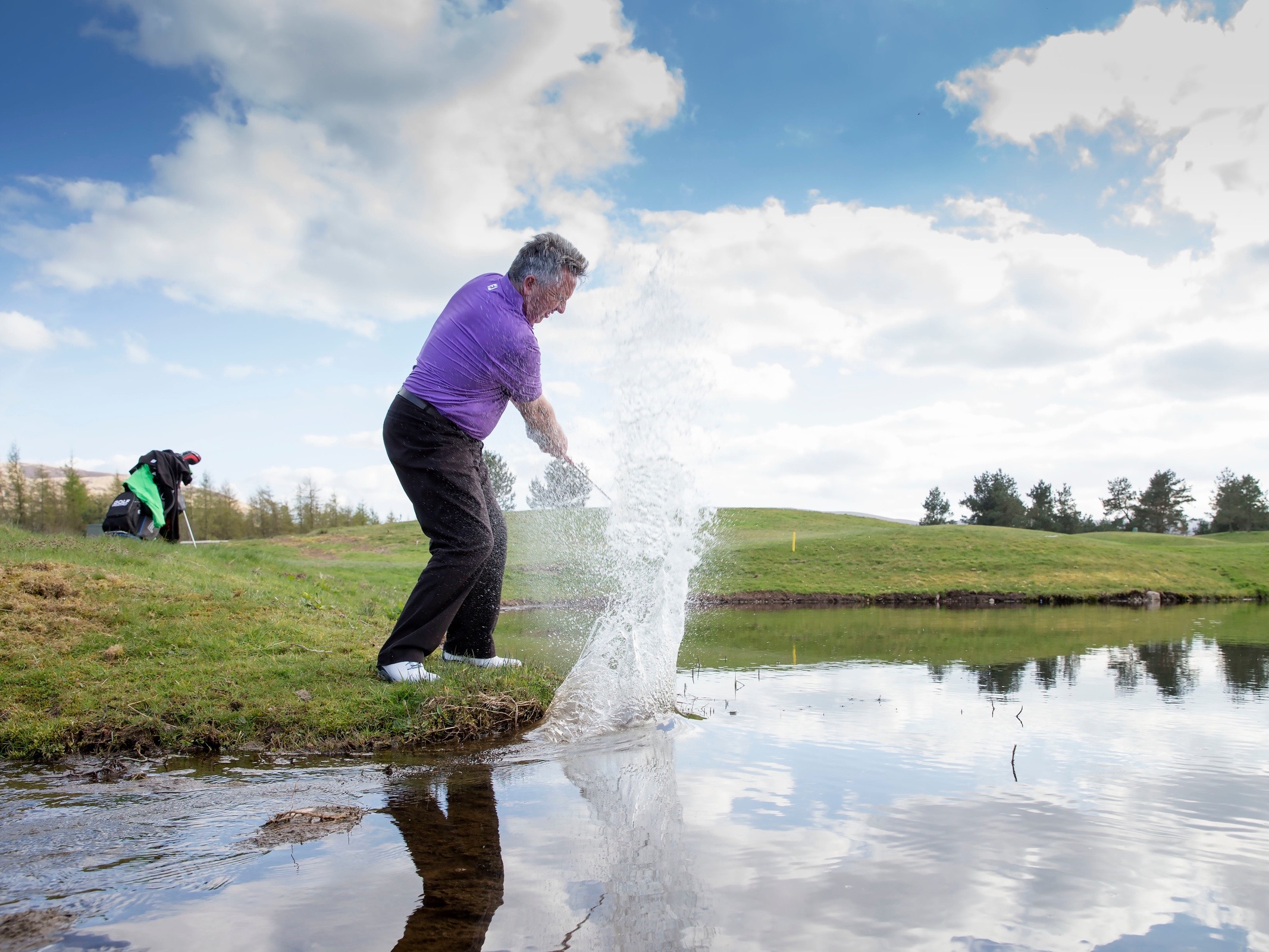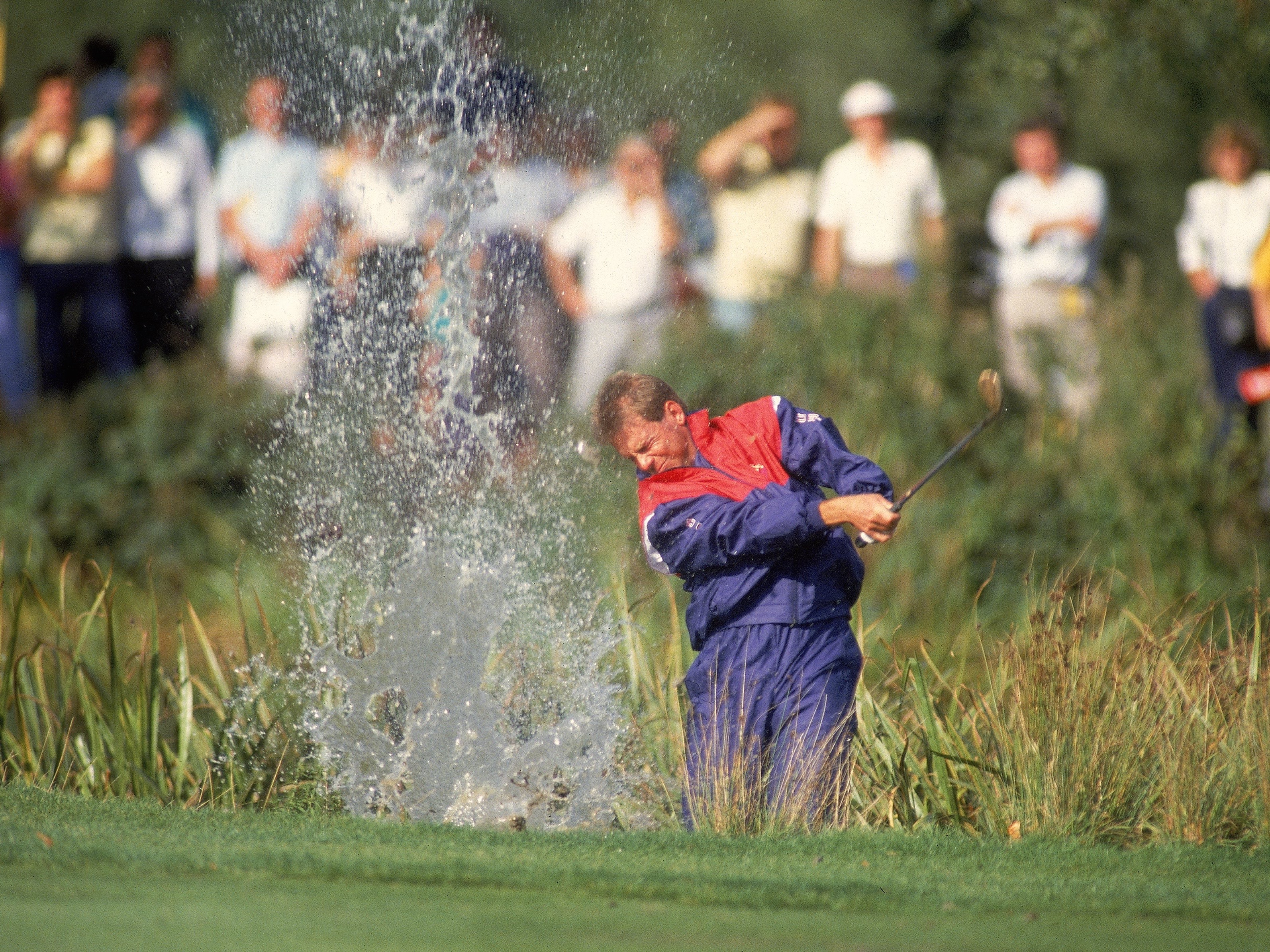When to play from the water
When it's in the hazard tantalisingly close to the edge, some will just take a drop, while others will be sorely tempted! When to play it from the water...


When it's in the hazard tantalisingly close to the edge, some will just take a drop, while others will be sorely tempted! When to play from the water...
Your ball’s in the water - and we don’t mean a water hazard that’s dry. Automatic penalty drop, right?
Well, almost… for although it is almost always exceedingly prudent to take your medicine to avoid potentially compounding the problem, occasionally there will be times when it’s worth even reasonably competent golfers taking a punt to try to save themselves a shot.

Even then, sometimes it will work out, and sometimes it won’t. The late Payne Stewart had two or three unsuccessful goes at it from the lake on the 18th at The Belfry in the 1989 Ryder Cup; Bill Haas played one of the shots of the year from the water on the penultimate hole of the 2011 Tour Championship, getting up and down to save par, and even imparting some impressive spin on the ball.
Okay, one was a greenside shot, and one from a water hazard flanking the fairway, but the difference between the two highlights one of the key deciding factors even for the world’s best – how much of the ball is submerged. In Stewart’s case, all of it; in Haas’ case, only part of it.

The problem is that when a hard metal object impacts water at considerable speed there is more resistance than most imagine, and it’s hard to get the club to do what you want it to do – i.e. cut through the water and allow you to make good enough contact to send the ball up and clear.
To get an idea of how much resistance, think of your last attempt to walk fast in a swimming pool – it’s like trekking through treacle!
Subscribe to the Golf Monthly newsletter to stay up to date with all the latest tour news, equipment news, reviews, head-to-heads and buyer’s guides from our team of experienced experts.
If the ball is only partially submerged, there is less resistance as less of the clubhead impacts the water giving you more chance of retaining the clubhead speed needed to splash the ball out safely.
The degree to which the ball is submerged may be the critical factor, but there are a few more questions to ask yourself before taking the plunge:-
Will you really gain anything?
If it’s greenside and there’s scope to get it on the green or fringe then there would be some merit. If it’s further back up the hole and you could only realistically progress it a few yards, it will probably make no difference to your chances of getting home with the subsequent shot, and the potential downside will outweigh the upside.
What is sitting beneath your ball in the water?
If it’s grass and mud, then all that can really go wrong is that you leave it in there and perhaps redecorate your lovely white trousers. If it’s rocks and stones, then you run the risk of not only damaging your club, but also yourself.
What’s the state of play in the game?
If you have a good score going and are playing well, why risk wrecking your card? Take your medicine in the belief that you’re playing well enough to recoup the dropped shot.
Have you ever practised it?
Probably not, which begs the question, what makes you think you can suddenly pull off a shot you’ve never even tried before when it really counts?
In summary, the shot from the water is probably only worth contemplating when the ball is not fully submerged, the area around it is free from rocks and stones, and there is a genuine potential upside.
And remember, if you do play it and then brush the water with your club on the backswing, you will be penalised two strokes or loss of hole under Rule 13-4.
So tread very carefully!

Jeremy Ellwood has worked in the golf industry since 1993 and for Golf Monthly since 2002 when he started out as equipment editor. He is now a freelance journalist writing mainly for Golf Monthly. He is an expert on the Rules of Golf having qualified through an R&A course to become a golf referee. He is a senior panelist for Golf Monthly's Top 100 UK & Ireland Course Rankings and has played all of the Top 100 plus 91 of the Next 100, making him well-qualified when it comes to assessing and comparing our premier golf courses. He has now played 1,000 golf courses worldwide in 35 countries, from the humblest of nine-holers in the Scottish Highlands to the very grandest of international golf resorts. He reached the 1,000 mark on his 60th birthday in October 2023 on Vale do Lobo's Ocean course. Put him on a links course anywhere and he will be blissfully content.
Jezz can be contacted via Twitter - @JezzEllwoodGolf
Jeremy is currently playing...
Driver: Ping G425 LST 10.5˚ (draw setting), Mitsubishi Tensei AV Orange 55 S shaft
3 wood: Srixon ZX, EvenFlow Riptide 6.0 S 50g shaft
Hybrid: Ping G425 17˚, Mitsubishi Tensei CK Pro Orange 80 S shaft
Irons 3- to 8-iron: Ping i525, True Temper Dynamic Gold 105 R300 shafts
Irons 9-iron and PW: Honma TWorld TW747Vx, Nippon NS Pro regular shaft
Wedges: Ping Glide 4.0 50˚ and 54˚, 12˚ bounce, True Temper Dynamic Gold 105 R300 shafts
Putter: Kramski HPP 325
Ball: Any premium ball I can find in a charity shop or similar (or out on the course!)